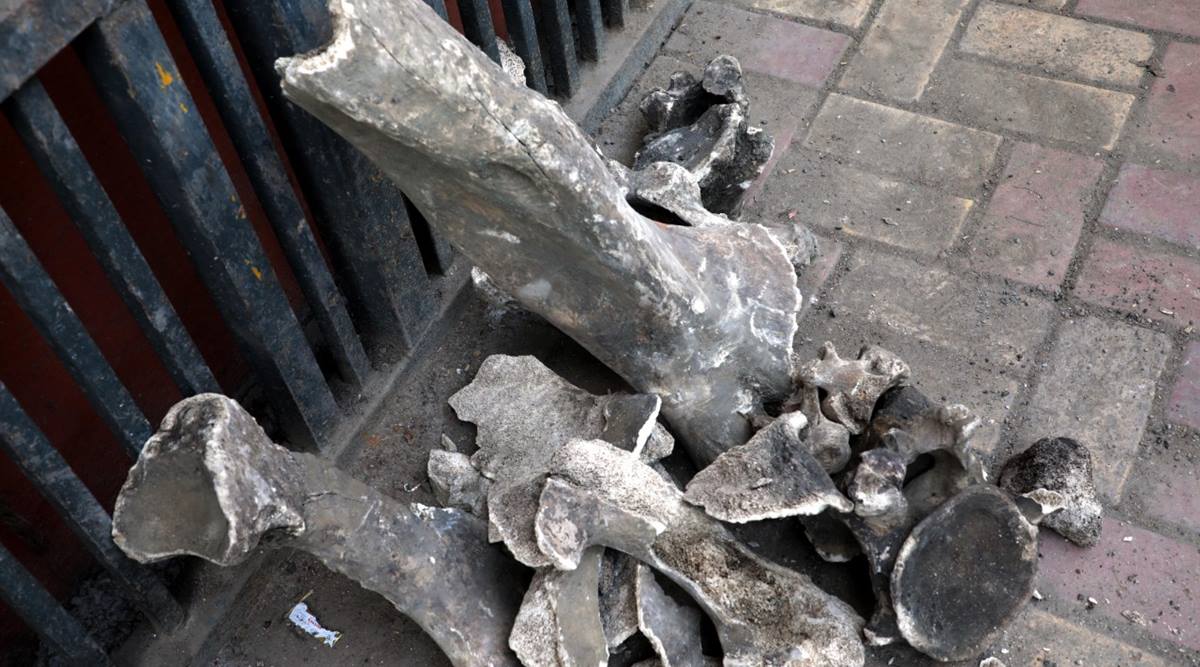 In all, six skeletal elements -- two of which belong to the elephant -- needed to be scientifically examined, said Pankaj Goel, archaeo-zoologist from Deccan College.
In all, six skeletal elements -- two of which belong to the elephant -- needed to be scientifically examined, said Pankaj Goel, archaeo-zoologist from Deccan College.WORKERS digging at the Pune Metro site near Mandai have accidentally discovered skeletal remains of animals dating back to when the Peshwas ruled Pune. This is possibly the first time such remains have been found within city limits. While the remains belong to an elephant and some bovine animals, these were not ancient but between 200 and 300 years old, experts said.
It was a usual working Wednesday for the workers, who were digging near Mahatma Phule Mandai, when they stumbled upon some elongated bones. They carefully removed them and alerted experts at Deccan College Post Graduate Research Institute.
A four-member team from the archaeology department visited the site on Thursday. Preliminary examination has revealed that the bones are of mammals, which could have been buried between 200 and 300 years ago.
“The bones were found at a depth of about 10 feet. One bone was identified as the lower limb of an elephant,” said Sachin Joshi, an archaeo-chemist from Deccan College, who led the inspection team.
According to experts, as this was an accidental discovery, only one of the bones was intact whereas the others suffered minor damages and crumbled.
Experts said the bones were not ancient and linked them to the Peshwa era. Local historians trace back the presence of a ‘Hatti Mahal’, which literally translates to Palace of Elephants, located in the vicinity of the present-day site suggesting that elephants were commonly found in the locality.
“Back in those days, areas around Mandai were not thickly populated and, hence, could have been used for burials,” said Joshi, adding that the area around the site must be scientifically excavated and bone samples studied in detail.
Joshi also said these bones were much lighter and fresh, ruling out fossilisation. Experts said fossilisation depended on the location where carcasses were buried or abandoned, for instance, inside a cave, underground or elsewhere.
“Fossilisation is a slow process. A few 1,000 years are needed for carcasses to turn into fossils. Besides, fossils acquire significant weight and, at times, become so heavy that they cannot be lifted easily,” explained Vijay Sathe, veteran paleontologist, who was formerly associated with Deccan College.
Between 1950s and 1980s, several archaeological teams from Deccan College carried out multiple excavations in and around Pune district. In the process, they unearthed similar skeletal remains. Animal bones dating back 50,000 to 60,000 years were also discovered near Morgaon in Pune district, Joshi said. “But we have no record of any such remains found in the city,” he added.
In all, six skeletal elements — two of which belong to the elephant — needed to be scientifically examined, said Pankaj Goel, archaeo-zoologist from Deccan College.
The college is now planning to coordinate with Maharashtra State Archaeological Department, who are default custodians of excavated skeletal remains, to study the bones in a scientific manner.